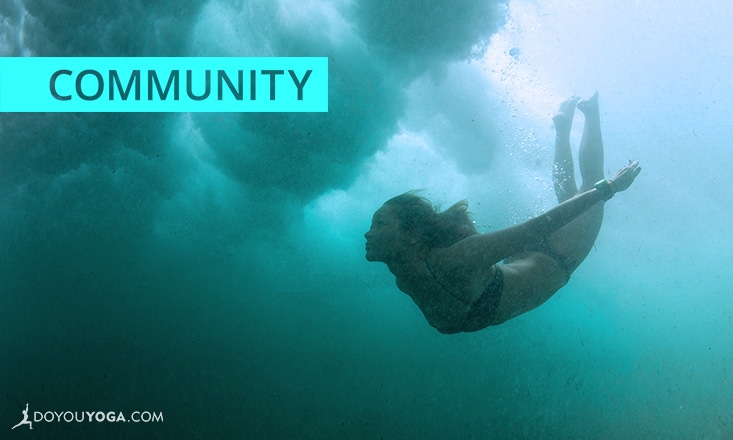Living in Hawaii provides me with the opportunity to practice both yoga and freediving as often as I like. These activities are intimately related and both connect to the same core principle: breath-work.
It’s odd to think of yoga and freediving as complementary activities, since it’s accurate to identify yoga as bodily movement led by breathing, and freediving as bodily movement while breath-holding.
Yet yoga practice can help improve freediving by expanding lung capacity and improving tissue flexibility, and lessons learned underwater while moving under pressure can improve yoga practice.
Lessons From the Breath
Men and women have been holding their breath and diving deep (freediving) for a long time; evidence from shores of the Baltic Sea points to the practice of apnea — or diving with one breath — going back between 7,000-10,000 years. Yoga, too, has a long history, as some scholars believe it's been practiced at least that long.
Since practicing yoga, I’ve noticed a big improvement in my ability to hold my breath while diving. In yoga, I do breath-work to make yoga practice satisfying and dives into the Pacific extraordinary.
For me, it’s not so much the depth to which I can go in either the asana or the dive, but the satisfaction of getting the most from my potential as a diver, a yogi, and a breathing and grateful sentient being.
Anyone stepping into a yoga class learns immediately that the first action focuses on breathing. And while the freediver may be interested in practicing breath holding to raise their efficiency of oxygen use in their blood, yoga breath-work deliberately focuses on cleansing body and mind in order to improve life energy.
Staying Calm Under Pressure
Diving well below the surface without an air tank requires a calm mind in the midst of a pressurized situation. The obvious mutual benefit for yogis and freedivers is turning hard nervous energy into softness and surrender. It happens with practice.
This kind of softness underwater allows one to move efficiently in an environment 8 times denser than air. If an underwater swimmer is not relaxed and fluid in their movement, they are wasting energy and precious oxygen. It’s that way with yoga, too.
Have you ever noticed someone practicing yoga with a furrowed brow? Maybe they are clenching their teeth or grimacing when holding Garudasana, Eagle Pose. Tense facial expressions are obvious signs of an inner bodily tension, and when one is taut, fluid movements in and out of asana or through water are nearly impossible.
Perhaps the best advice I’ve read about swimming was that the swimmer ought to think of moving through water as if he or she were a liquid rather than a solid. This is mental counsel, more than advice on a swimming stroke or finning technique.
It applies to yoga instruction too, when a teacher will remind the class to relax their faces, drop their shoulders, soften the muscles, or send breath to the places where the yogi’s body is holding tension.
Learning to Move Fluidly
The yogi can benefit from freediving advice to move fluidly as if in water, and the diver can benefit from yoga’s counsel to soften the face, shoulders, and muscles. Following these complementary pieces of advice from both schools of thought can lead not only to improved asana or more time underwater, but a complete life makeover.
By following the swimmers advice of not pushing against — but rather yielding — the yogi activates deliberate movements between muscular and skeletal systems with ease. But like freediving, this happens only with time and practice. And this means lots of time and practice.
At our core, we are fluid, and the mutual lessons of freediving and yoga are intended to remind us of that fluid core.
Relax, and move like liquid in and out of water. And while you’re at it, in the words of Ricardo Montabalan from a long-gone television program, “Smiles everyone.”


